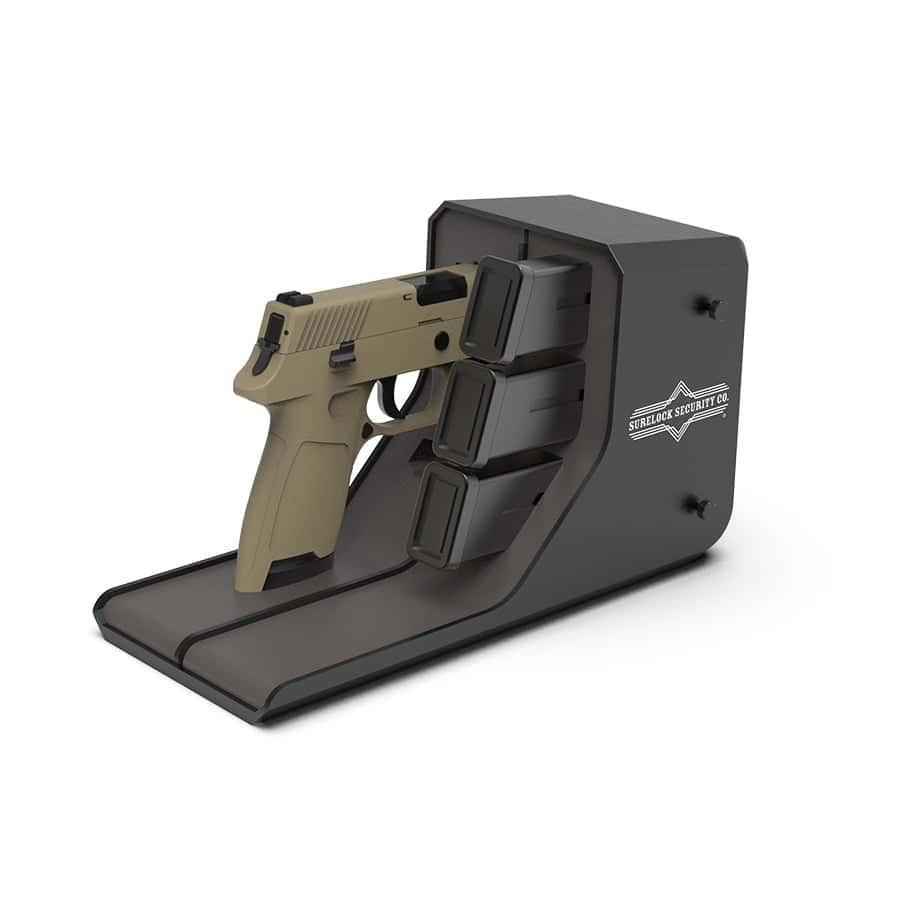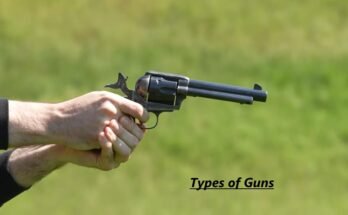You’ve invested in firearms – for protection, sport, or as cherished heirlooms. You’ve secured them in a sturdy safe against theft. But there’s a silent, insidious enemy lurking that can destroy your valuable guns just as effectively as a thief: moisture. Humidity, temperature swings, and condensation inside your gun safe can lead to devastating rust, pitting, corrosion of delicate mechanisms, and ruined wood stocks. Understanding what truly keeps moisture out is not just about preservation; it’s about protecting your investment and ensuring functionality when it matters most.
This comprehensive guide cuts through the myths and half-truths, revealing the science-backed strategies and products that form an impenetrable moisture barrier for your firearms.
Why Moisture is a Gun Safe’s Worst Nightmare (Beyond Just Rust)
While rust is the most visible consequence, moisture damage runs deeper:
-
Surface Rust: Starts as tiny specks but rapidly spreads, pitting metal surfaces (barrels, actions, slides) and destroying finishes.
-
Internal Corrosion: Moisture seeps into actions, trigger mechanisms, and springs, causing internal rust that compromises function, safety, and reliability.
-
Wood Damage: Swelling, warping, cracking, and mold growth on wooden stocks and grips.
-
Optics Destruction: Fogging inside scopes and red dot sights, corrosion on lenses and housings.
-
Ammunition Degradation: Moisture can compromise primers and powder, leading to misfires or dangerous pressure variations.
-
Value Erosion: Significant rust and corrosion drastically reduce the monetary and collector value of firearms.
The Culprits: Where Does Moisture Come From?
Understanding the sources is key to defeating them:
-
Ambient Humidity: The primary source. Air naturally contains water vapor. When humid air enters the safe (even during brief openings), it brings moisture with it.
-
Temperature Fluctuations (The Condensation Trap): This is critical. When the temperature outside the safe drops (e.g., at night or in an unheated garage/basement), the thick steel walls of the safe cool down. The warmer, moisture-laden air inside the safe then hits these cold walls and condenses, releasing liquid water directly onto your guns and the safe’s interior. This cycle repeats daily, constantly adding moisture.
-
“New” Air Introduction: Every time you open the safe, you let in a fresh batch of humid air.
-
Concrete Floors: Safes placed directly on concrete slabs can wick moisture upwards through the bottom over time, especially in basements or garages.
-
The Guns Themselves: Cold guns brought into a warmer environment (like a heated safe room) can “sweat” as moisture condenses on their cold metal surfaces.
-
Fireproofing Material: Some types of fireboard insulation can absorb ambient moisture over time and release it slowly inside the safe.
The Arsenal: What Actually Keeps Moisture Out (Ranked by Effectiveness)
-
Controlled Heat: The Gold Standard (Dehumidifier Rods)
-
How it Works: A low-wattage, UL-listed heating rod (like the popular GoldenRod or similar brands) gently warms the air inside the safe.
-
Why it Defeats Moisture:
-
Prevents Condensation: By keeping the internal air temperature slightly above the external wall temperature (even during cooling cycles), it stops condensation from forming on the walls and guns. Warm air holds more moisture, preventing it from turning to liquid.
-
Lowers Relative Humidity (RH): Warm air has a lower relative humidity compared to cold air, even if the absolute moisture content is the same. Heating the air reduces the RH% inside the safe to safe levels (ideally 40-50%).
-
Continuous Operation: Plugs in and runs 24/7, requiring minimal power.
-
-
Pros: Highly effective, low maintenance, long-lasting (often 10+ years), safe, operates silently.
-
Cons: Requires an electrical outlet near the safe. Initial cost slightly higher than desiccants.
-
Installation Tip: Mount it vertically along the back wall or side, allowing warm air to rise and circulate naturally. Plug it into a nearby outlet, or for ultimate concealment, consider wiring it through the wall to an outlet inside a closet or behind furniture.
-
-
Rechargeable Desiccant Dehumidifiers: The Powerful, Active Absorber
-
How it Works: Contains moisture-absorbing materials (usually Silica Gel beads, sometimes clay). As air passes through or over the unit, the desiccant chemically binds and traps water vapor. “Rechargeable” units have an indicator (often color-changing beads) showing when they are saturated.
-
Why it Works: Actively pulls moisture out of the air, reducing the absolute humidity level inside the safe.
-
Recharging: When saturated (beads turn pink, or indicator says full), remove the unit and plug it into a standard wall outlet. The built-in heater dries out the desiccant, turning the beads back to blue (or the indicator clear), ready for reuse. Takes several hours.
-
Pros: Very effective at lowering RH%, no continuous electricity needed (only for recharging), reusable for years, available in various sizes.
-
Cons: Requires manual monitoring and recharging (every 1-6 months depending on humidity and safe usage), takes up space inside the safe, needs an outlet for recharging elsewhere.
-
Top Brands: Eva-dry (E-333, E-500 are popular sizes), Pro Breeze, Dry & Dry.
-
-
Silica Gel Canisters/Packs: The Passive Backup
-
How it Works: Similar principle to rechargeable units – silica gel beads absorb moisture. Sold in bulk canisters, bags, or small packs.
-
Effectiveness: Good as a supplement to rods or rechargeable units, or for very small safes with low humidity. Less effective on its own for larger safes or humid environments. Requires frequent replacement or oven-drying to regenerate.
-
Regeneration: Can be dried in a standard oven at low temperature (around 250°F / 120°C) for several hours until beads turn blue again (check manufacturer instructions). Microwave regeneration is NOT recommended (fire risk).
-
Pros: Inexpensive, no power needed, flexible placement.
-
Cons: Lower capacity, requires frequent attention/replacement, easily saturated, less effective than active solutions.
-
-
Vapor Corrosion Inhibitors (VCIs): The Molecular Shield
-
How it Works: VCI emitters (bags, papers, chips) release a protective molecular vapor that forms an invisible, monomolecular layer on metal surfaces. This layer inhibits the electrochemical reactions that cause rust.
-
Effectiveness: Excellent as a secondary defense, especially for long-term storage or protecting hard-to-reach areas. Works with humidity control, not instead of it. Does not lower humidity levels.
-
Pros: Works without direct contact, protects intricate parts, long-lasting (emitters last months/years), low cost, easy to use (just hang or place inside).
-
Cons: Does not address the root cause (humidity), effectiveness can vary, some users report a slight odor. Should be used alongside desiccants or heat.
-
Top Brands: Zerust, Hornady.
-
-
Proper Safe Placement and Preparation: The Foundational Step
-
Elevate Off Concrete: Use a dense rubber mat, plastic moisture barrier sheet, or a purpose-built safe pallet to break contact with concrete floors, preventing moisture wicking.
-
Location, Location, Location: Avoid placing safes in inherently damp areas like unfinished basements or garages whenever possible. Choose a climate-controlled interior room if feasible.
-
Acclimate Guns: Allow cold guns to warm up to room temperature before placing them inside the safe to prevent immediate condensation (“sweating”).
-
Minimize Open Time: Limit the duration the safe door is open, especially in humid conditions, to reduce humid air intake.
-
Clean & Oil: Always ensure guns are clean and properly lubricated with a quality gun oil or preservative before storage. Oil provides a physical barrier against moisture. Avoid silicone cloths inside the safe as they can trap dust.
-
What DOESN’T Work (Common Myths Debunked):
-
Light Bulbs: Incandescent bulbs generate too much localized heat (fire risk, can damage finishes/plastics) and don’t circulate air effectively. Avoid.
-
Charcoal Briquettes: Ineffective and messy. Won’t absorb enough moisture.
-
Rice: A very weak desiccant, quickly saturates, and can attract pests. Not recommended.
-
Cat Litter: Some clay litters have slight absorbency but are dusty, messy, and inefficient compared to purpose-made desiccants.
-
“Breathable” Covers: Fabric covers inside the safe trap moisture against the gun, accelerating rust. Only use dedicated silicone-impregnated gun socks designed for storage if humidity is already fully controlled.
-
Relying Solely on the Safe’s Seal: Door gaskets keep out dust and some smoke, but they are NOT airtight and will not prevent humid air from slowly seeping in or condensation from forming.
Building Your Moisture Defense Plan: Recommendations
-
Essential Minimum (Basic Protection):
-
Elevate the safe off concrete.
-
Use a large Rechargeable Desiccant Dehumidifier (e.g., Eva-dry E-500). Check and recharge religiously.
-
Add Silica Gel Canisters as backup.
-
Clean, oil, and acclimate guns before storage.
-
-
Recommended Standard (Strong Protection for Most):
-
Elevate the safe.
-
Install a Dehumidifier Rod (GoldenRod or equivalent) as your primary defense.
-
Add a Rechargeable Desiccant Dehumidifier as a backup and for extra absorption capacity. Check/recharge every 3-6 months.
-
Consider adding VCI Emitters for added corrosion protection on metal surfaces.
-
Clean, oil, and acclimate guns.
-
-
Maximum Defense (High Value, Humid Climates, Critical Storage):
-
Elevate the safe in a climate-controlled room if possible.
-
Use a Large Rechargeable Desiccant Dehumidifier.
-
Use VCI Emitters throughout the safe.
-
Monitor internal conditions with a Digital Hygrometer (see below).
-
Rigorous gun cleaning/oiling protocol.
-
The Critical Tool: The Hygrometer
You can’t manage what you don’t measure. A digital hygrometer placed inside your safe is non-negotiable. It tells you the exact Relative Humidity (RH%) level.
-
Target RH: Aim to maintain 40% to 50% RH inside your gun safe. Below 30% can dry out wood and leather excessively. Above 50-60% significantly increases rust risk.
-
Calibration: Some cheap hygrometers are inaccurate. Look for models that can be calibrated (often using a salt test) or are known for reasonable accuracy. Check it periodically against a known good unit or calibration kit.
Conclusion: A Multi-Layered Barrier is Key
Keeping moisture out of your gun safe isn’t about a single magic bullet; it’s about building a multi-layered defense system that addresses the core sources of humidity and condensation. While desiccants and VCIs play important supporting roles, a properly installed dehumidifier rod is the single most effective tool for preventing condensation and maintaining consistently low humidity. Combine this with safe placement, diligent gun preparation, and a reliable hygrometer for monitoring, and you create an environment where your firearms are truly protected against the relentless threat of rust and corrosion.
Investing in robust moisture control is an investment in the longevity, functionality, and value of your firearms. Don’t let hidden humidity destroy your prized possessions. Implement these strategies today and enjoy peace of mind knowing your guns are safeguarded against this silent destroyer.
Video: Gun Safe *HUMIDITY CONTROL* Trick
Related Post:
10 Best Long Gun Safe ( A Real-World Guide for Gun Owners )



